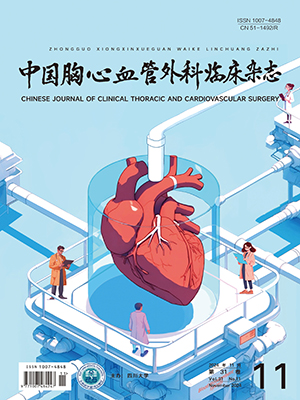Objective To investigate the changed rules of the cardiac functions in rabbits and to provide theoretical gists for clinical diagnosis and treatment after blunt chest trauma(BCT). Methods Using the models of moderate to severe BCT with BIM-Ⅱ Bio-impactor in 20 rabbits to examinate the cardiac functions with cardiac catheterization, the single photonemission computed tomography(SPECT) and the Doppler echocardiography at preinjury and 1h, 2h, 4h, 6h, 8h, 12h and 24h after BCT. Results Central venous pressure( CVP), left ventricular enddiastolic pressure (LVEDP) and the decreasing time constant of left intraventricular pressure (T) at 24h after trauma were higher obviously than those before trauma (P lt;0.05,0.01). The -dp/dtmax at 24h after trauma was lower markedly than that before trauma (P lt;0.05 ). The ejection fraction(EF),1/3 EF, 1/3 ejection rate(1/3ER) and the ratio of 1/3 filling rate (1/3FR) to 1/3ER of the right ventricle at 24h after impacted were lower markedly than those before impacted (P lt;0.05). The peak filling rate, 1/3 filling fraction, 1/3 filling rate, the ratio of peak filling rate to peak ejection rate and the ratio of 1/3FR to 1/3ER of the left ventricular at 24h after impacted were lower obviously than those before impacted (P lt;0.05, 0.01). Conclusion The cardiac functions are changed significantly after BCT. The expressions of the right ventricular dysfunctions mainly are systolic dysfunction while the left ventricular dysfunctions are mainly diastolic dysfunction after BCT. All the cardiac catheterization, SPECT and the Doppler echocardiography are beneficial to the diagnosis of cardiac dysfunction after BCT. The SPECT is more exactitude and the Doppler echocardiography is more cheaper.
Citation: MIN Jiaxin,ZHU Peifang,WANG Zhengguo. The Changes of Cardiac Functions after Blunt Chest Trauma in Rabbits. Chinese Journal of Clinical Thoracic and Cardiovascular Surgery, 2008, 15(5): 369-373. doi: Copy




